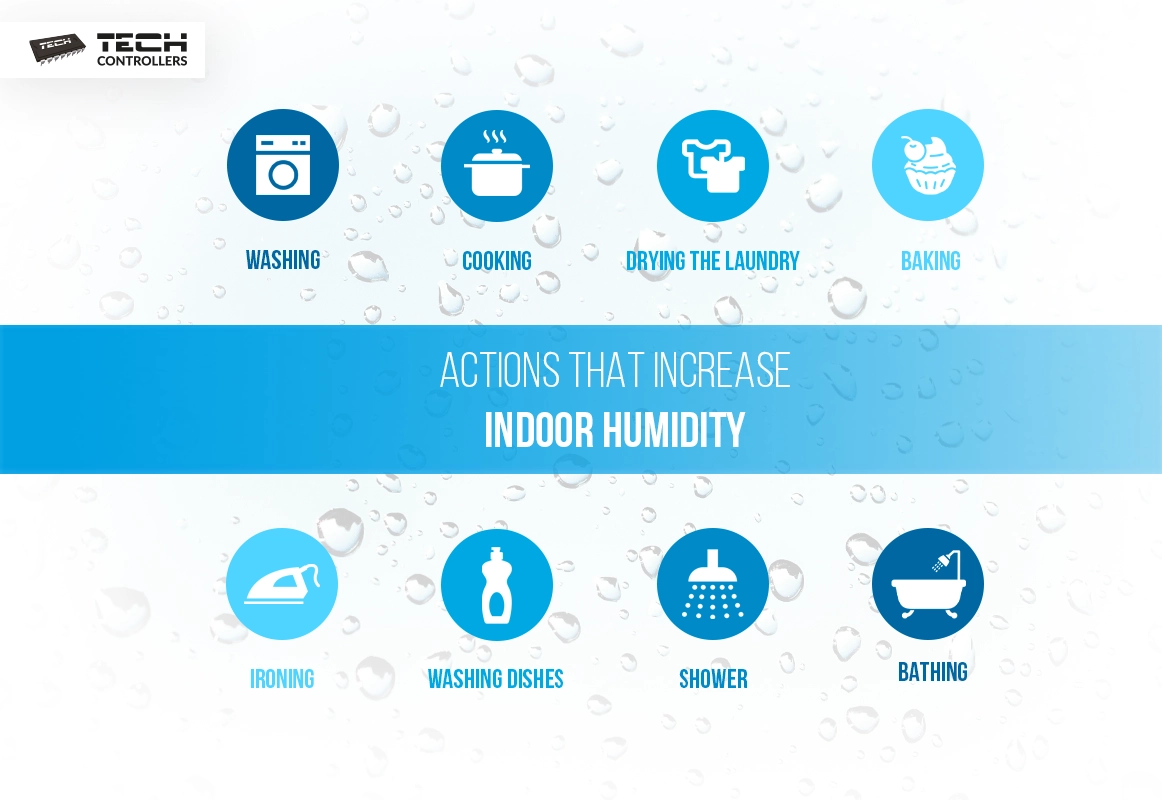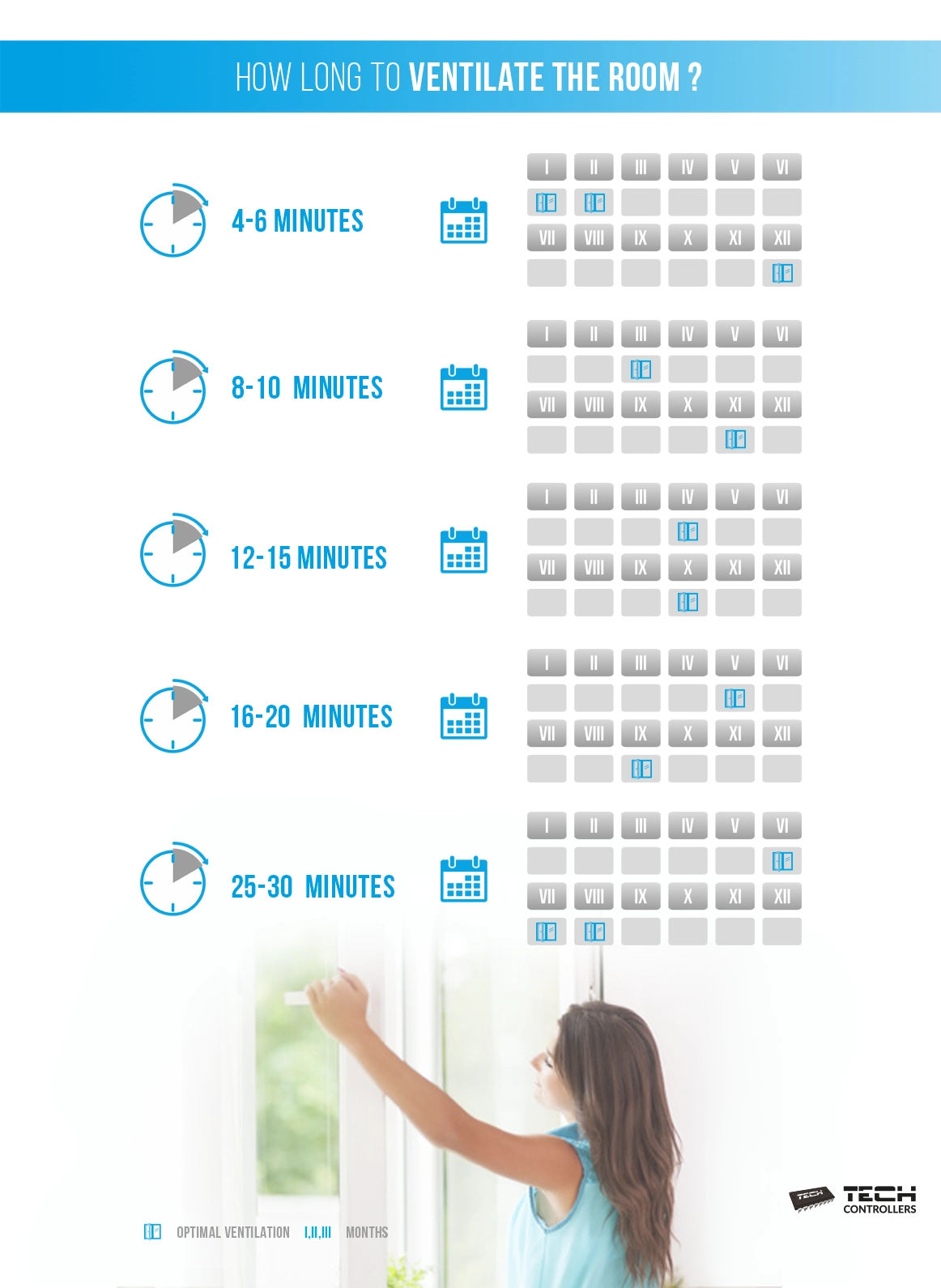It may seem that it is not difficult to air rooms - it’s enough to open the window. In practice, however, the way we do it and how long we leave the window open should depend on the conditions which prevail outside. Leaving the windows open for too long in winter will cause the room temperature do drop significantly and, as a result, increase the heating bills. On the other hand, if we air the rooms improperly in summer, the temperature may become uncomfortably high. So how should we ventilate the rooms in different seasons? You can find handy tips on how to do it in our article.
The amount of clean air in our house affects both our health and the condition of the residential building. Airtight rooms, without access to fresh air create specific micro-climate. High humidity contributes to creating conditions which are conducive to rapid microbial growth.
Our daily activities, in particular those shown in the graphic, also increase the humidity.

The warmer the air, the more water it absorbs. When it cools down, its saturation limit decreases and humidity results in water vapour. However, water vapour condenses in the places where the temperature is the lowest. In practice, these are walls, door lintels and the space behind furniture, which leads to ugly stains on the walls. This is only one of many consequences of not letting fresh air inside.
The most common effects of lack of ventilation include:
To prevent these effects and feel comfortable in your own home, you need to ventilate the rooms every day. How to do it best and most effectively in summer and winter? You will learn about it later in the article.

On hot summer days, we often instinctively leave the windows wide open to get fresh air. Unfortunately, this is not a good idea during the heat peak hours. Opening the windows when the it is scorching hot we can get the opposite effect - instead of lowering the temperature we will increase it because the cool air from our rooms will be replaced by the hot air from the outside.
However, if we stick to a few simple rules, we can ensure proper temperature in our house.

Different rules apply when we want to air our rooms in winter, especially when the temperature falls below zero. Doing it improperly leads to heat loss and, consequently, increased heating costs. How to ventilate the rooms in winter? Here are some simple tips.
The windows which are produced currently are characterized by high tightness. On the one hand, they contribute to significant savings, but at the same time they prevent proper air circulation. That is why we need to ventilate the rooms more often.
Opening windows wide is not the only way to let some fresh in through the window. Micro-ventilation is also effective. It can be achieved thanks to special window hardware, which is very often mounted on the sash or window frame. In this way, a small gap will be created between the frame and sash, allowing fresh air flow in. The sash will remain in this position thanks to the window catch. Micro-ventilation is a good option, especially during storms and heavy rainfall when opening the window may lead to damage to the wall or floor. In the case of wooden floorboards, even a small amount of water may cause damage to the floor structure, which in turn generates considerable costs associated with repairing the damage.
Another way to let more fresh air in is to install window vents. These are small devices designed to be installed on windows or walls of buildings. Their greatest advantage is efficiency - the amount of air that can flow through them into the building. The air flow can be adjusted, but it is impossible to close such vents. For this reason, they seem a good solution especially for people who are often away from home. With window vents your home will never feel like an oven.
Reasonable heating and regular airing of rooms is a good practice if we strive for a pleasant and healthy indoor climate ensuring comfort and savings. In winter, it makes sense to open the windows wide, but not for a long time. Airing rooms does not mean cooling them excessively. How long we leave the windows open should depend on the season of the year and the atmospheric conditions prevailing outside. The estimated time needed to ventilate a room in particular months of the year is presented in the graphic below.

No comments